
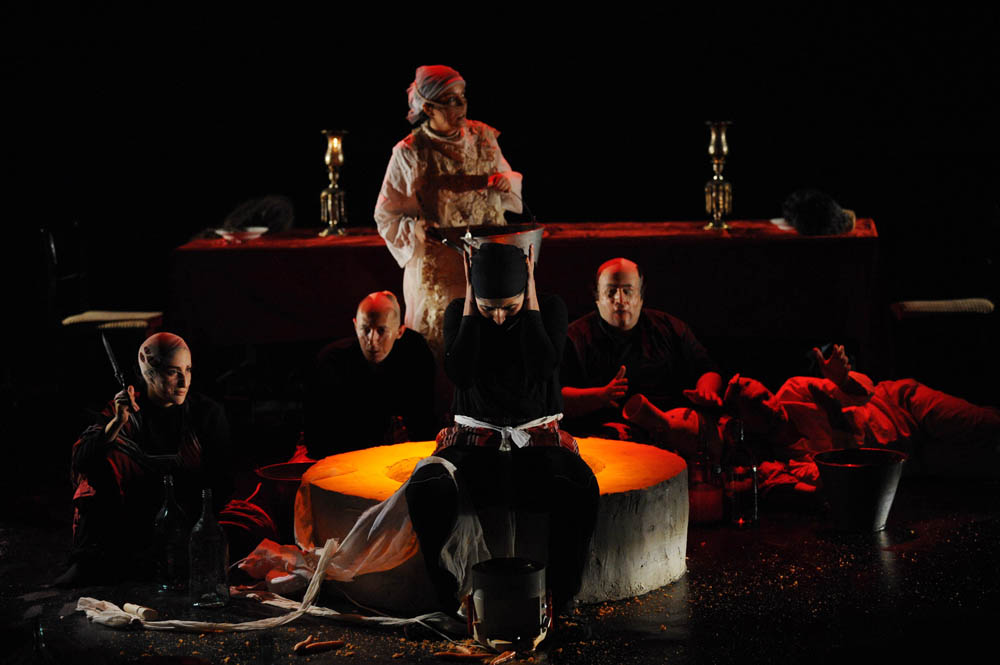
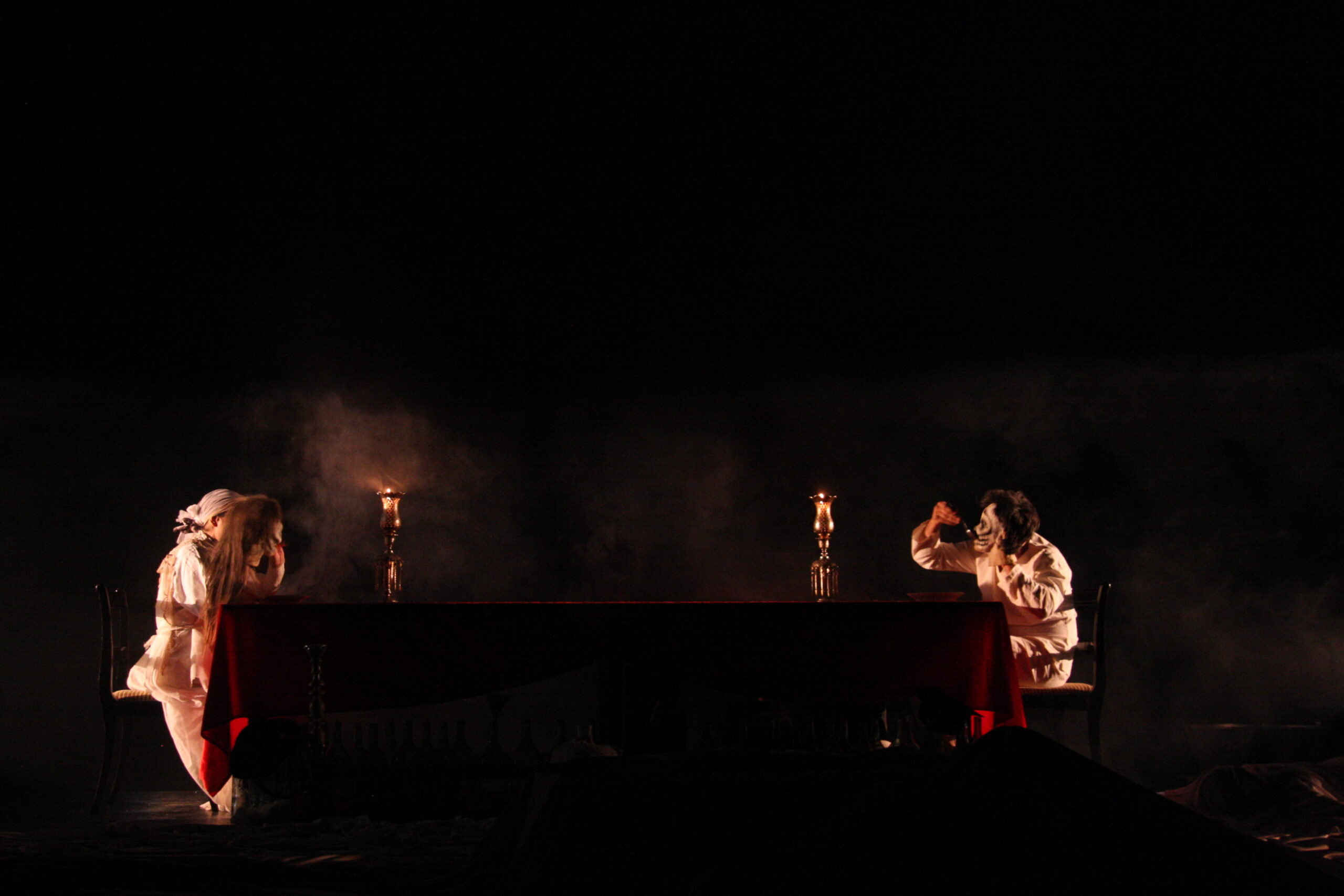
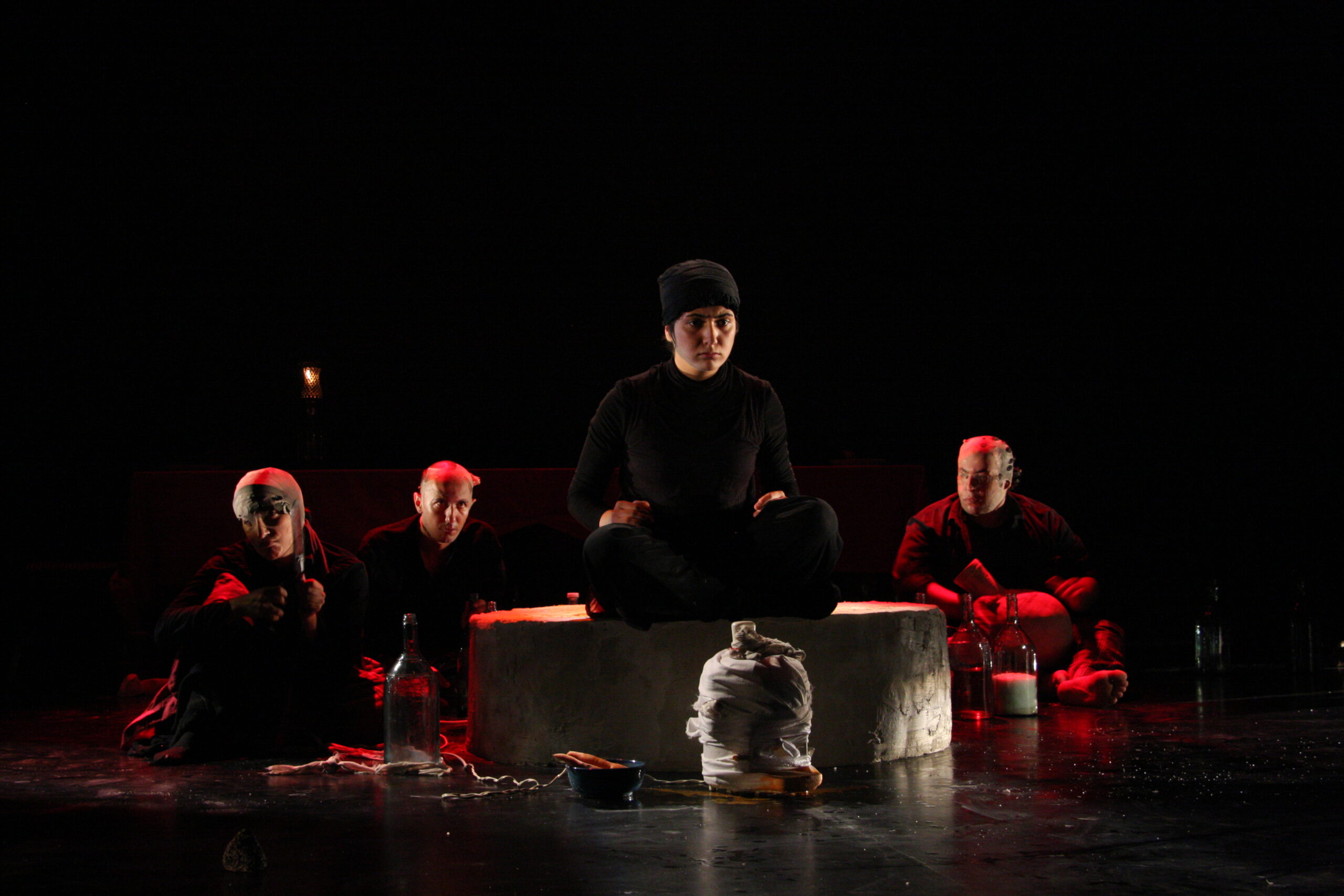
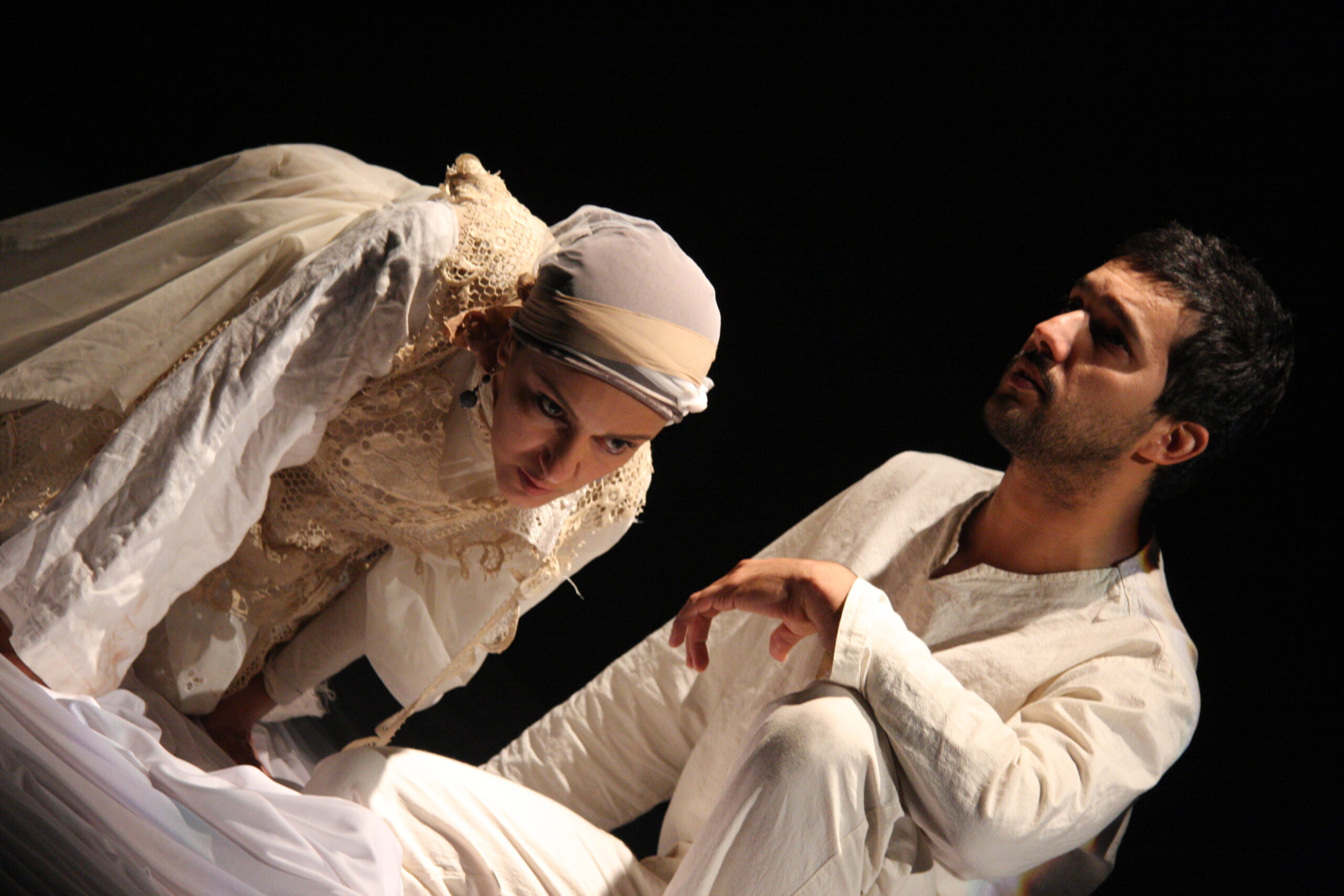
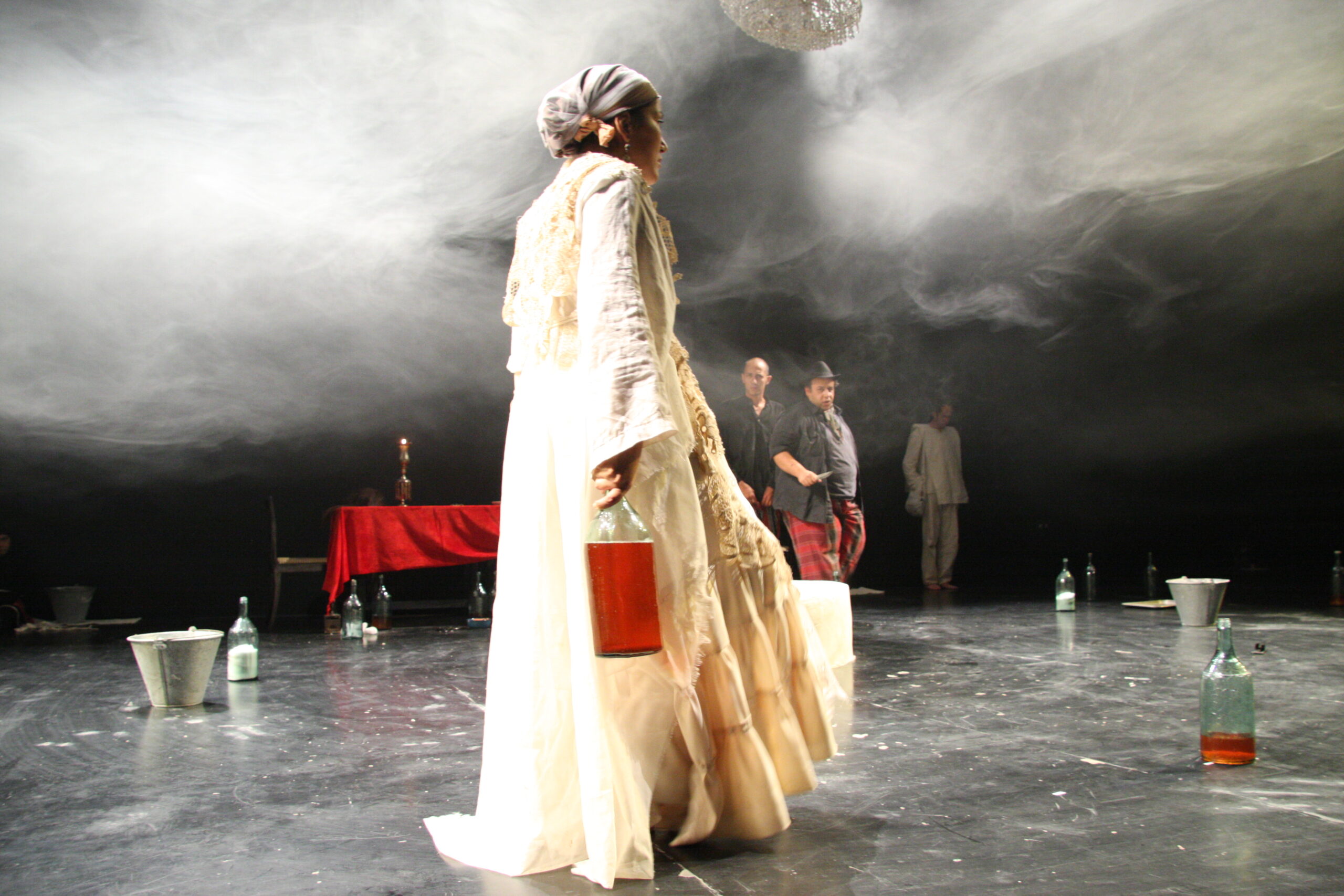
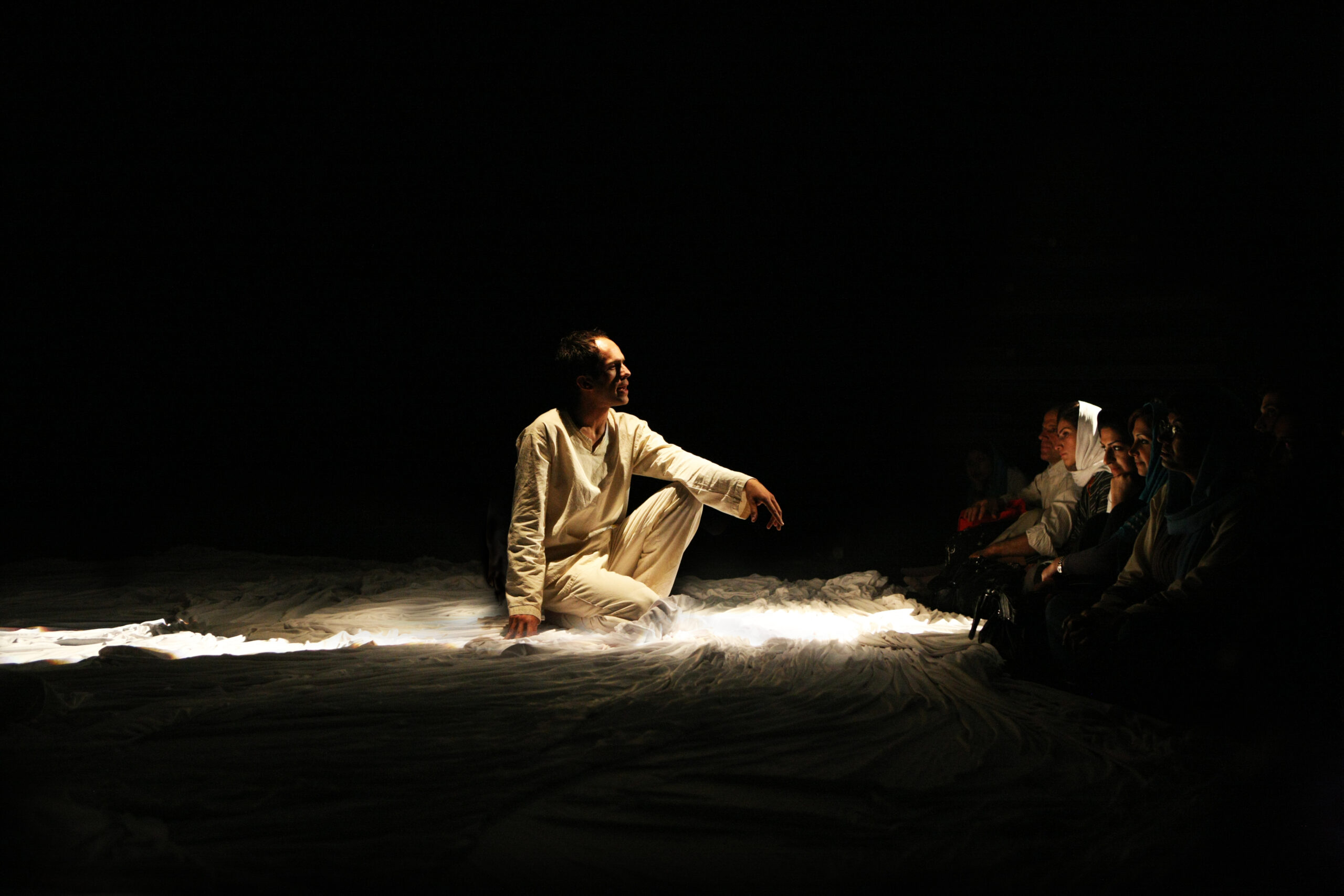
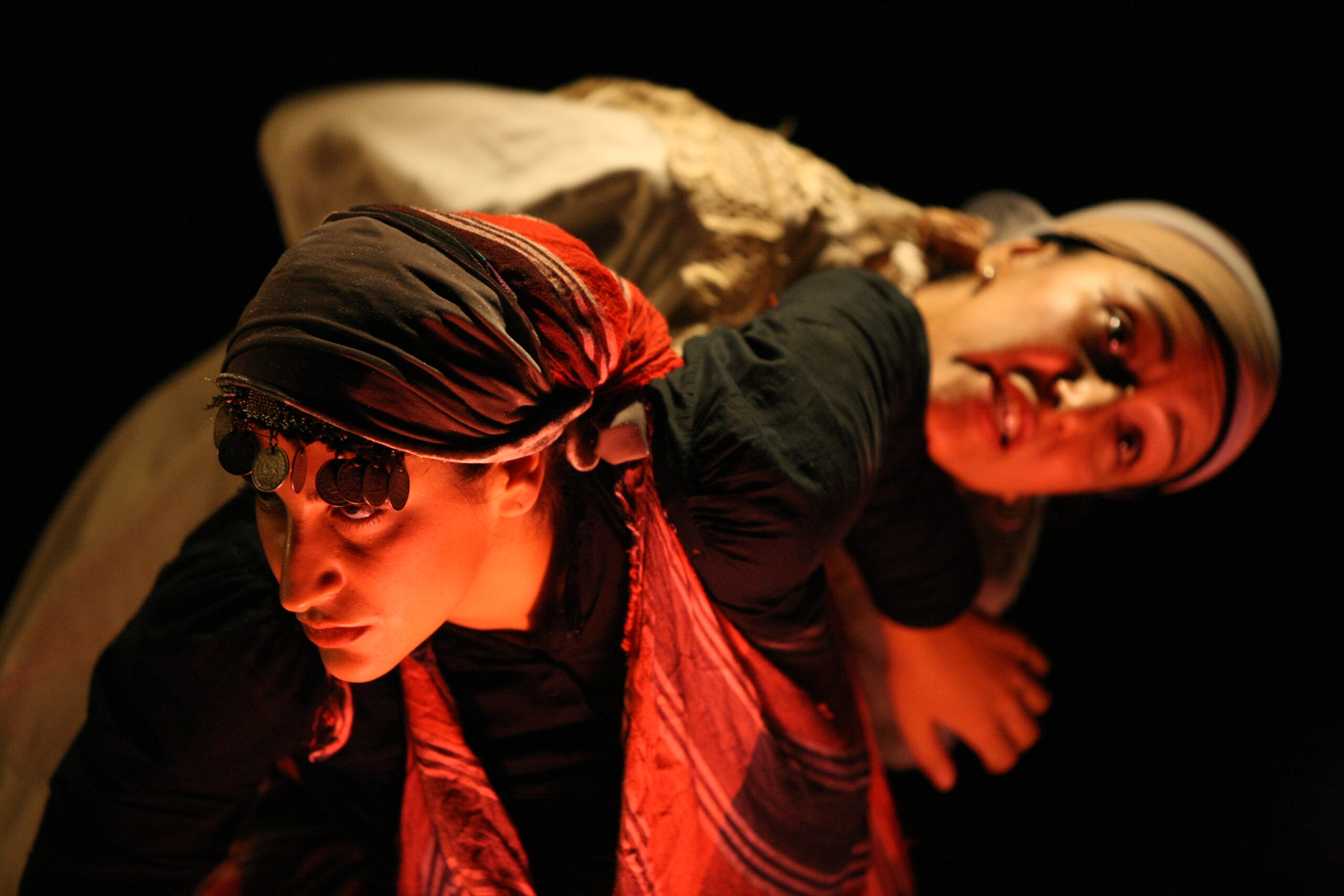
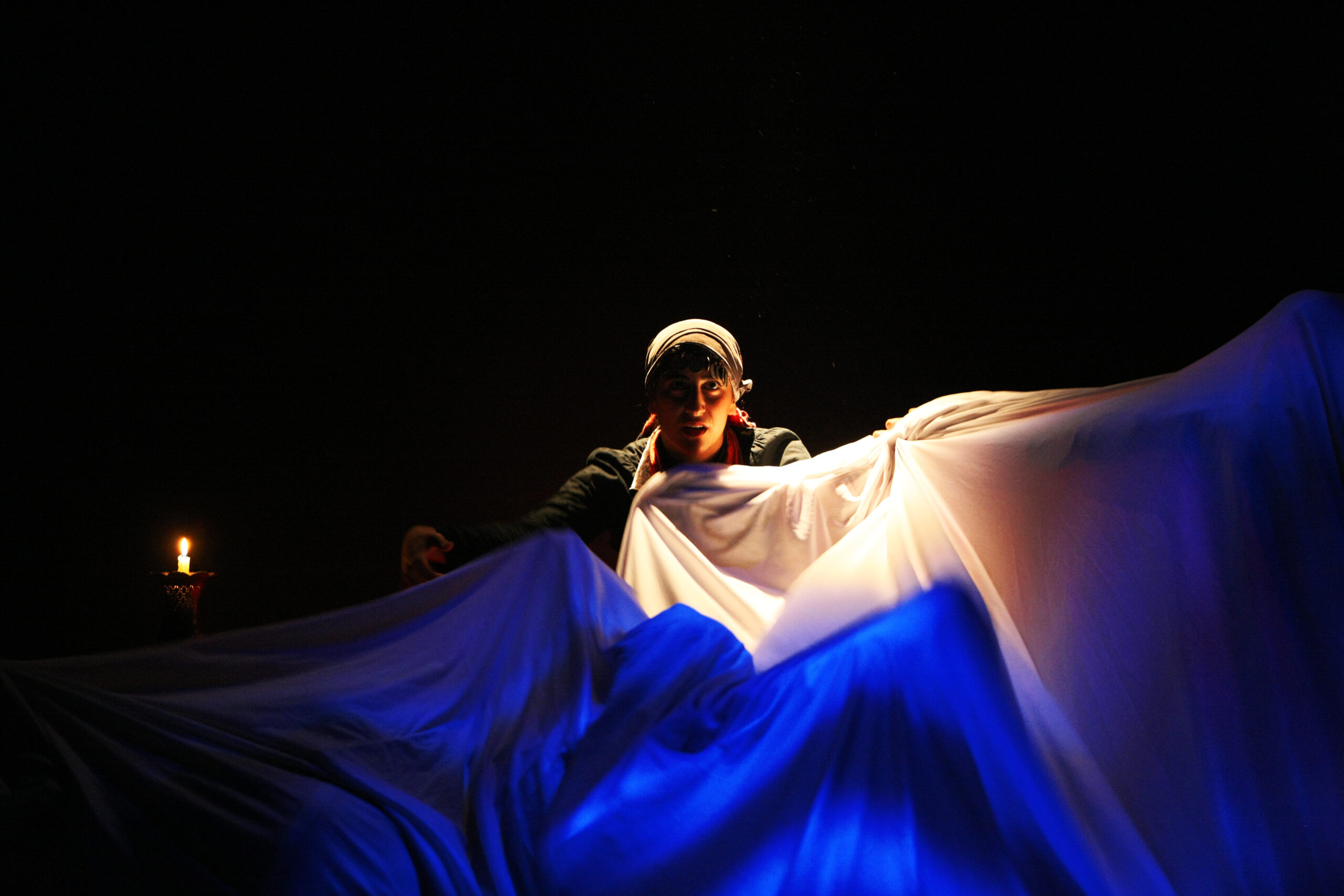
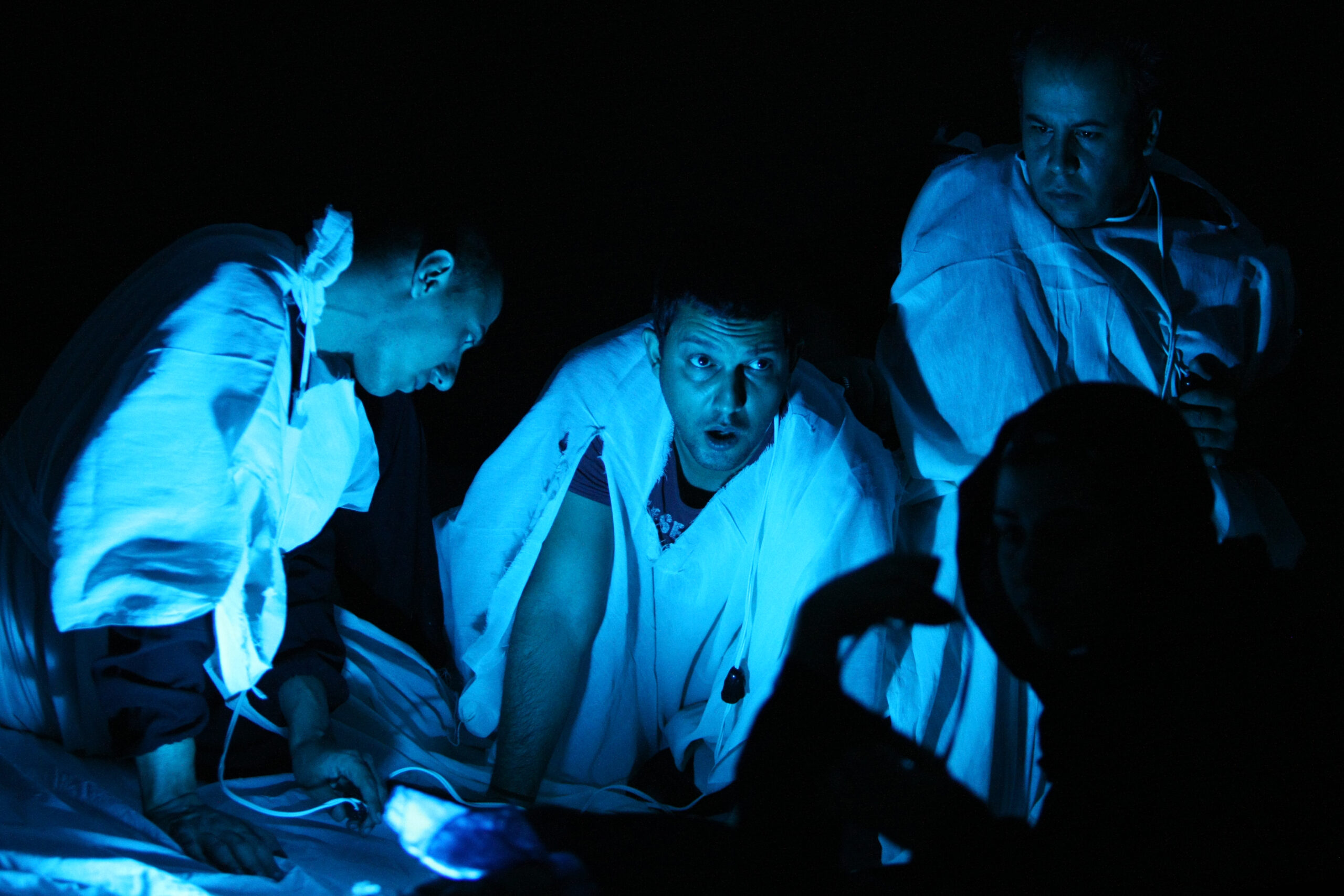










Description: The play represents the culmination of a long term collaboration between director “Arvand Dashtaray” and playwright “Tala Motazedi”. It is an experimental piece that blends literature and performance, developed over a year and a half of research. Though it is non-realistic in form, the narration carries the story through its themes. The goal is to subconsciously captivate the viewer with its unique dialect and performance format. The show’s main theme revolves around Atta, as he returns to his father’s house in this mysterious tale. He goes back to his sister whom is living alone and leaves his pregnant gipsy wife, named Mahi with her and leaves again. Toba, his sister rapes and kills Mahi and raises Attas little girl. Then Atta comes back and …
By exploring the aftermath of the Iranian revolution on people’s individual identity, and what it means to come home again, the work paints an intimate portrait of Iranian culture while exploring themes of identity and homecoming. With its use of language, visuals, and music, this work has been acclaimed as “one of the most original works in contemporary Iranian theater” by Shargh newspaper.
Highlights: After the revolution, “Dog-Silence” became Iran’s first independently produced show. Iranian theater had always relied on subsidies from the Dramatic Arts Center — until this groundbreaking production broke that dependence. Its unique modernity and fresh approach to storytelling made it a major innovation in Iranian theater art. Although “Dog-Silence” was criticized for drawing attention to issues such as identity crises, children of revolution, and homecoming, it also won praise for its use of language that captures the deep cultural connections between Iranians and their society.
Many say that “Dog-Silence” ushered in a new era of contemporary Iranian theater, inspiring other independent productions and transforming the industry forever. This milestone in Iranian theater history is significant not only because of its impact on independent artists’ creative freedom, but also because it opened up new avenues of artistic expression across Iran.
Playwright: Tala Motazedi
Designer and director: Arvand Dashtaray
Choreography: Sara Reyhani
Cast: Hamed Behdad, Panthea Bahram, Baran Kosari, Sara Reyhani, Hamidreza Falhi, Dariush Faezi, Javad Namaki, Babak Hamidian
Composer: Ramin Behna
Graphic Design: Iman Rad
Poppet designer: Adel Bezdodeh
Lighting designer: Abdul Khaliq Mossadegh
Assistant and planner: Leila Modonpour
Second assistant director: Hamid Khorram Toosi
Producer: Arvand Dashtaray
Production @VirguleFPAC | Teheran|Samandarian Theater|Iranshahr Complex|2011
